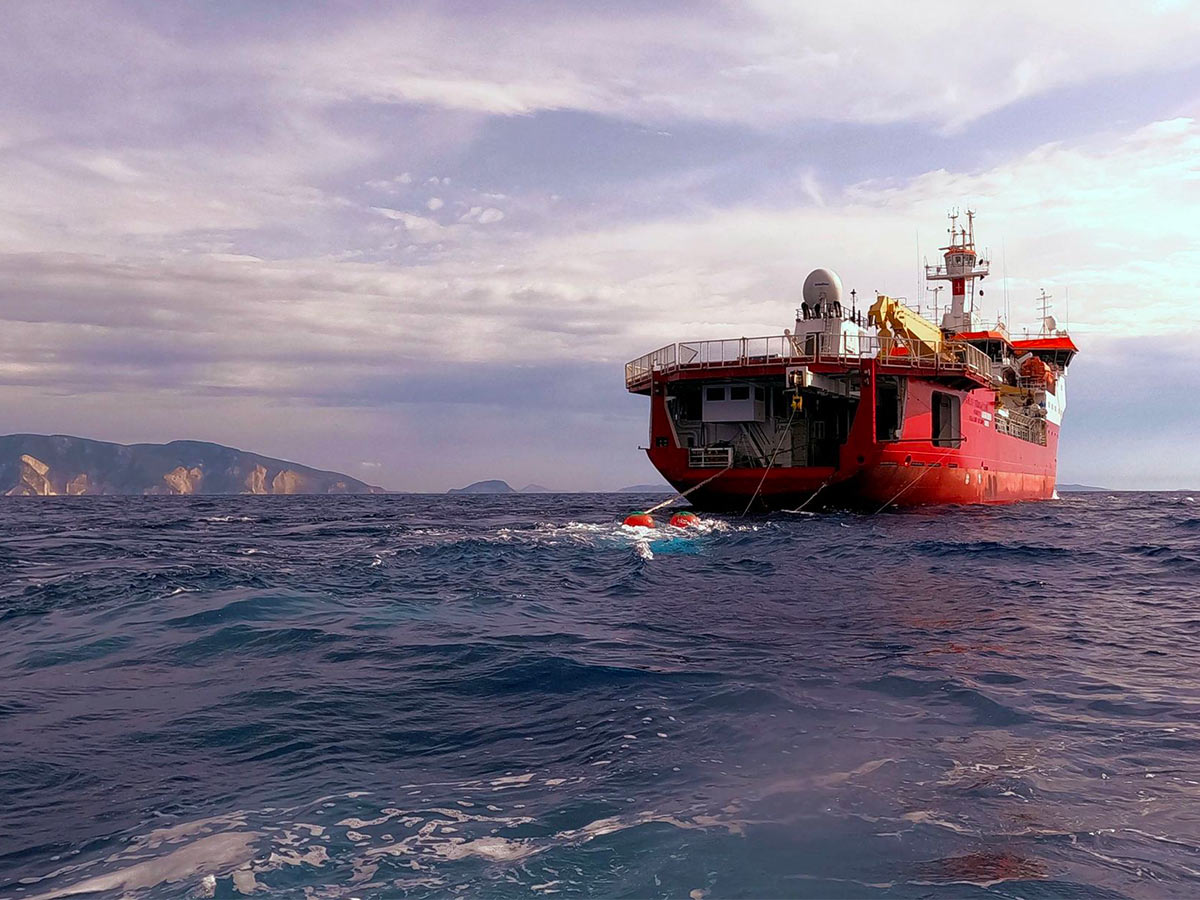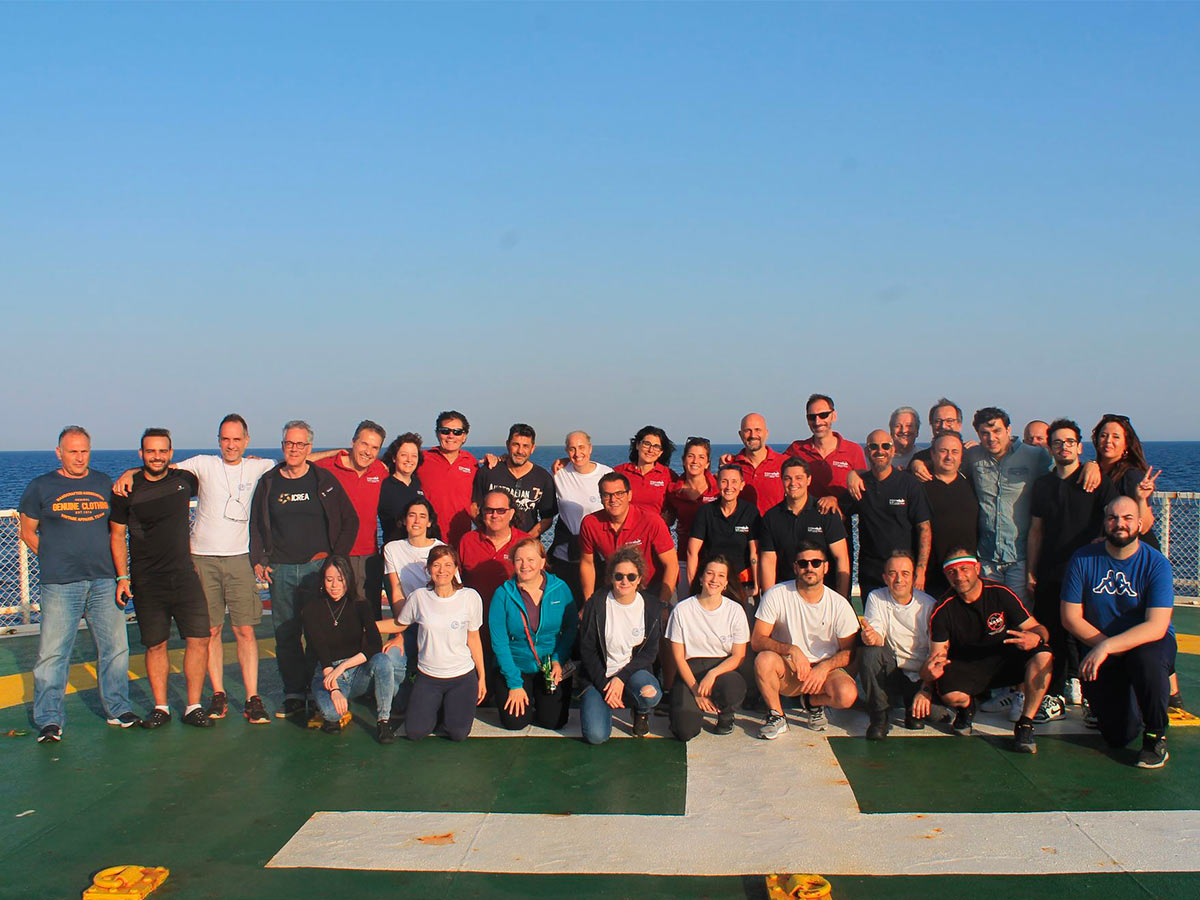
The campaign in the Mediterranean of the R/V Laura Bassi is completed
The campaign in which the ship Laura Bassi, the Italian icebreaker of the National Institute of Oceanography and Applied Geophysics, spent 18 days in the Mediterranean Sea has come to an end. The ship, commanded by Captain Vincenzo Caso, left Trieste on 10 June and contributed to three different scientific initiatives.
Drilling for the official geological map of Italy: the CARG project
The first part of the campaign took place on 10 June in the waters of the Gulf of Trieste, where the ship collected 3 sediment cores for the Official Geological Map of Italy (CARG) project, in particular for the study of the flooded area of Geological Sheet No. 101-130 Trieste - Caresana, for which Martina Busetti, researcher of the Section of Geophysics of the OGS, is responsible.
Data for understanding the geology of the Hellenic Arc: the project POSEIDON
The second phase of the campaign took place in the waters of the Aegean Sea, more precisely in the western Peloponnese, between the Gulf of Patras and the Ionian Islands (Kefalonia, Lefkada and Zakynthos), a study area of the Eurofleets POSEDION project, where marine geophysical data were collected from 12 to 21 June on board the R/V Laura Bassi.
The project involved an international group composed of researchers and technical staff from the OGS and Spanish, Greek and Italian colleagues, coordinated by César R. Ranero from the Instituto de Ciencias del Mar-CSIC in Barcelona (Spain), Paraskevi Nomikou from the National and Kapodistrian University of Athens (Greece) and Filomena Loreto from the Institute of Marine Sciences of the National Research Council of Bologna (Cnr-Ismar).
The following people participated in the mission: Roberto Romeo (mission leader), Fabrizio Zgur (project leader), Daniela Accettella, Andrea Cova, Michela Dal Cin, Lorenzo Facchin, Max Iurcev and Gianpaolo Visnovic from the Centre for Management of Maritime Infrastructures of the OGS; Alessandro Bubbi from the OGS Section of Oceanography; Matilde Ferrante from the OGS Section of Geophysics; Stefano Lizzi from the OGS Directorate for Financial and Asset Management; Marco Santulin from the OGS Center for Seismological Research.
In addition to the OGS staff, the following guests were on board: Irene Merino (Spain), Giota Giogli (Marine Mammal Observer, Greece), Danai Lampridou (Greece), Elisavet Nikoli (Greece), Valentina Ferrante (Cnr-Ismar), Serafeim Poulos – Greece , Ramon Ametller (CSIC-UTM, Spain) and Mario Sanchez (CSIC-UTM - Spain).
EMSO-E2M3An observatory to study the health of the ocean
At the end of the POSEIDON project, the ship moved to the southern Adriatic to take part in the FixO3-12 oceanographic campaign, coordinated by Vanessa Cardin. The aim of this campaign is to position a new buoy acquired by OGS and to carry out maintenance work on the regional observatory EMSO-E2M3A. This observatory is part of the European deep-sea observation infrastructure network and is operated in collaboration with the Institute of Polar Sciences of the National Research Council of Bologna (Cnr-Isp).
Participants in the mission: Vanessa Cardin (Head of Mission and Head of Observatory) and Julien Le Meur from the Physical Oceanography Group (PHYS), Alessandro Bubbi, Lorenzo Chiaruttini, Stefano Gustin from the Technological Development Group (TECDEV), Stefano Kuchler and Gilda Savonitto from the Oceanographic Calibration and Metrology Center (CTMO) of the OGS, Carlotta Dentico (University of Venice) and Stefano Miserocchi (Cnr-Isp).

